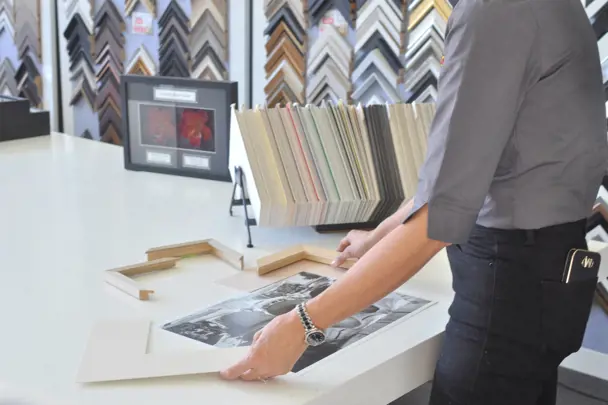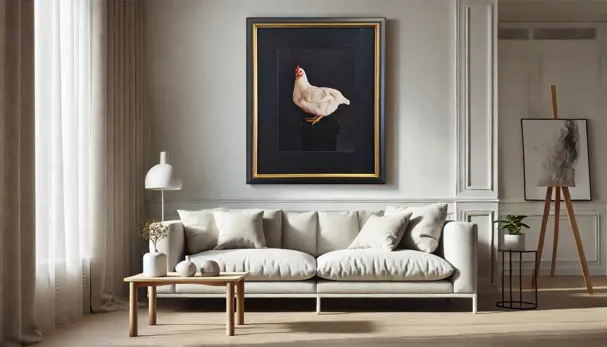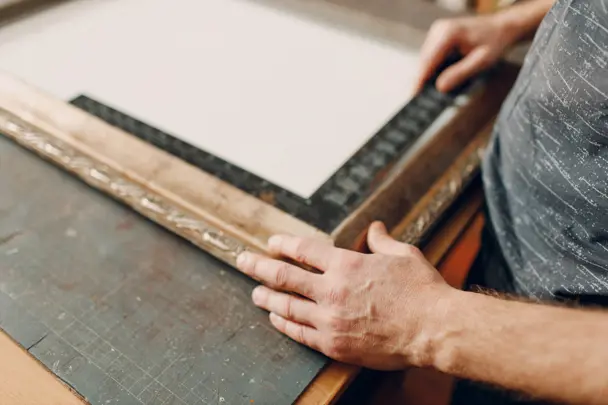Updated 7 April 2025
A stretched canvas is a popular way to display artwork, as it provides a professional and timeless look. But what if you want to frame it? Many people assume that a stretched canvas cannot be framed, but that’s not true.
Framing a stretched canvas not only enhances its aesthetic appeal but also helps protect it from dust, dirt and accidental damage. In this guide, we’ll explore the different framing options available and provide step-by-step instructions on how to frame your canvas effectively.
Why Frame a Stretched Canvas?
Framing a stretched canvas can provide several benefits, including:
Enhanced Presentation – A frame can give your artwork a polished, finished look, helping it blend with your home or office décor.
Protection – A frame adds an extra layer of protection against damage, especially for delicate or valuable pieces.
Structural Support – Over time, stretched canvases can warp slightly. A well-fitted frame helps maintain the canvas's shape and integrity.
Types of Frames for Stretched Canvases
There are three common ways to frame a stretched canvas, each offering a distinct look and level of protection:
1. Traditional Frames
This method encloses the entire canvas within a standard custom frame, much like a framed print or photograph. However, because stretched canvases are wrapped over a stretcher bar, they require deeper frames designed for canvas art.
2. Floating Frames
A floating frame leaves a small gap between the edge of the canvas and the frame, creating a modern "floating" effect. This method is ideal for contemporary artwork, as it highlights the entire canvas without covering any of the edges.
3. Back Loader Frames
With this method, the stretched canvas is inserted from the back of the frame, making it a secure and sleek option. The back loader technique allows for a minimalist look while protecting the edges of the canvas.
Step-by-Step Guide to Framing a Stretched Canvas
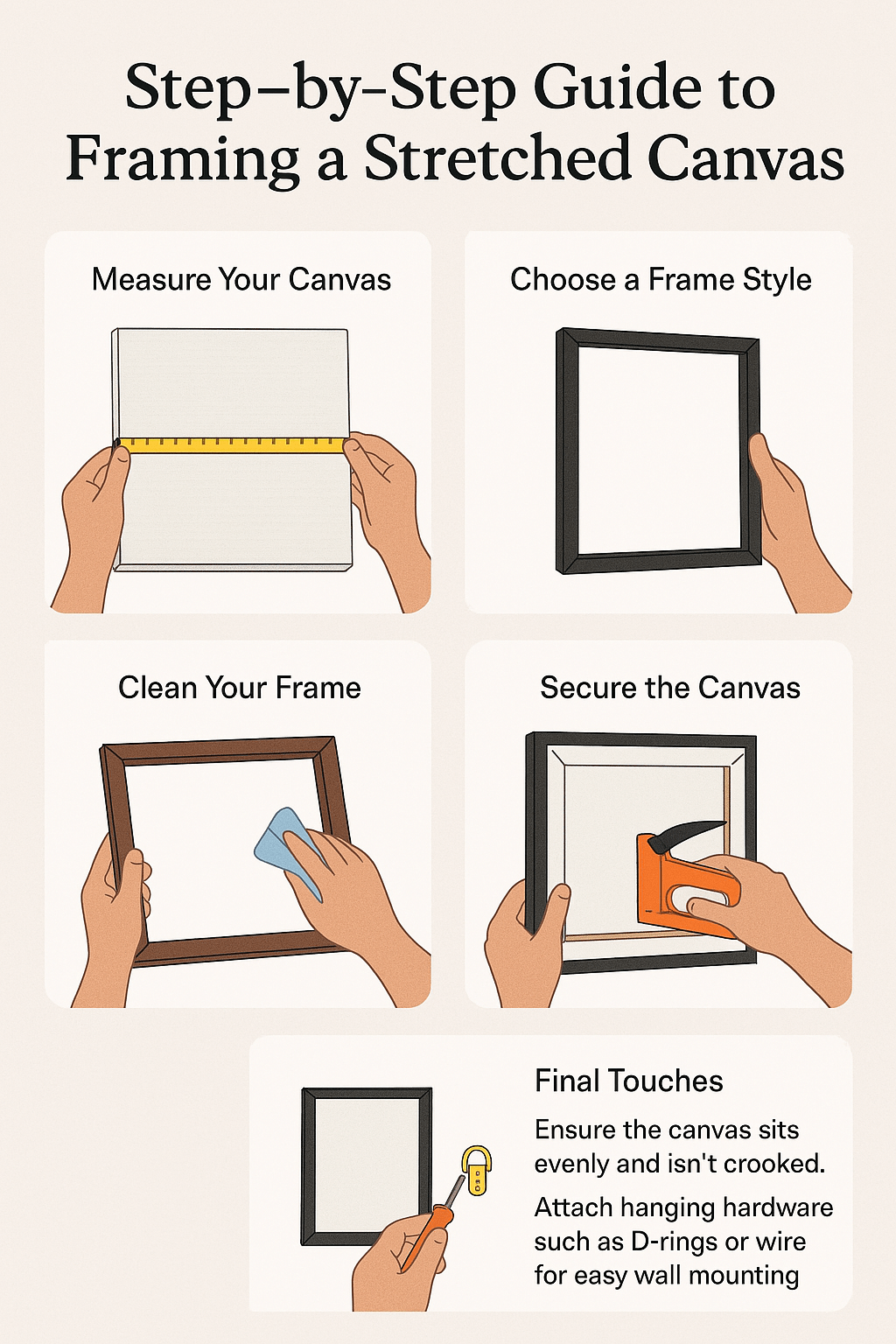
Step 1: Measure Your Canvas
- Use a measuring tape to get the exact dimensions of your stretched canvas, including its depth.
- Choose a frame with a deep enough rabbet (inner lip) to accommodate the canvas thickness.
Step 2: Choose a Frame Style
- Consider the three options above and select one that suits your artwork and décor.
- Floating frames are great for modern pieces, while traditional frames suit classic paintings.
Step 3: Prepare Your Frame
- If you’re using a ready-made frame, remove any glass or backing boards, as they aren’t needed for a stretched canvas.
- Clean the frame to remove dust or fingerprints.
Step 4: Secure the Canvas
- For a traditional or floating frame: Place the canvas inside the frame and use offset clips, brackets or a framing gun to secure it in place.
- For a back loader frame: Insert the canvas from the back and use screws or brackets to hold it securely.
Step 5: Final Touches
- Ensure the canvas sits evenly and isn’t crooked.
- Attach hanging hardware such as D-rings and wire for easy wall mounting.
- Wipe down the frame and display your beautifully framed artwork!
Common Mistakes to Avoid when framing a stretched canvas
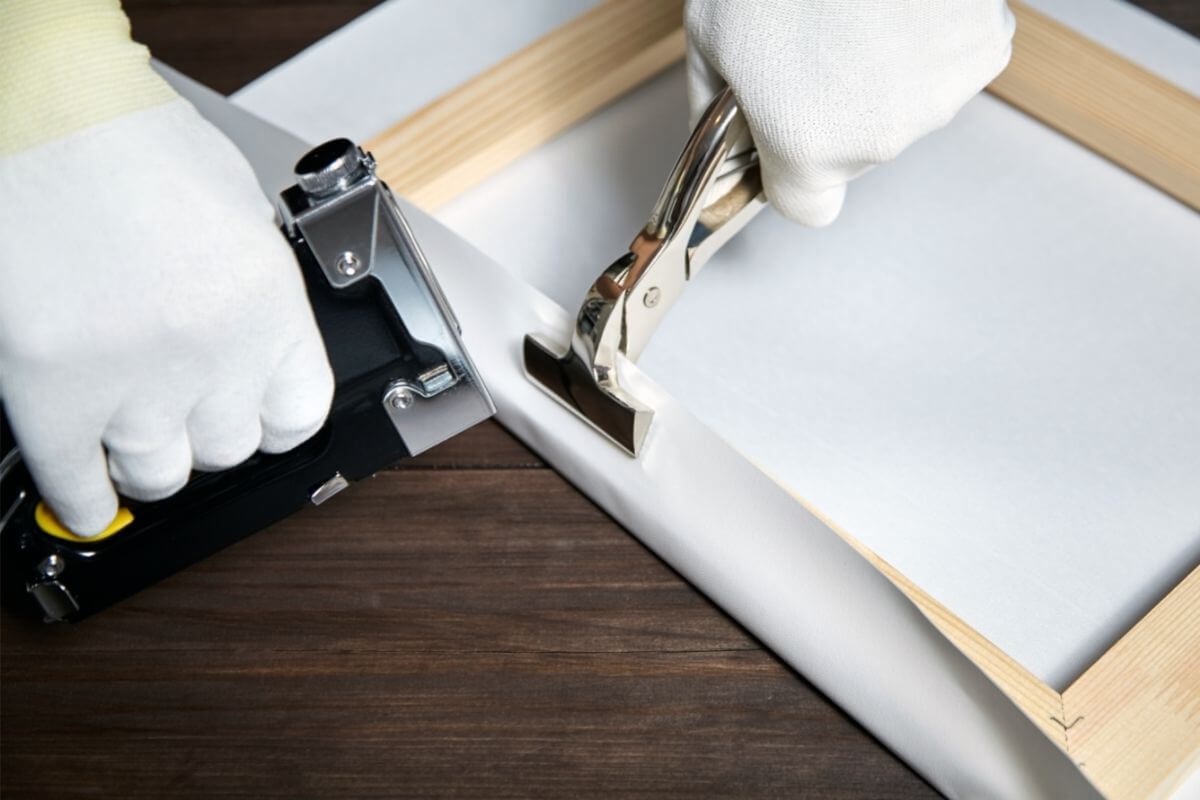
- Choosing the wrong frame size – Always measure accurately to avoid a frame that’s too small or too large.
- Using incorrect mounting methods – Some fasteners can damage the canvas, so opt for proper framing hardware.
- Over-tightening clips or brackets – This can put unnecessary stress on the canvas and cause it to warp over time.
How to Maintain a Framed Canvas
To keep your framed canvas looking great for years, follow these maintenance tips:
- Dust Regularly – Use a soft microfiber cloth to gently remove dust.
- Avoid Direct Sunlight – Prolonged exposure to sunlight can cause fading.
- Control Humidity – Excess moisture can weaken the canvas and frame.
- Check Hanging Hardware – Over time, screws and wires can loosen, so inspect them periodically.
DIY vs. Professional Framing – Which Is Best?
DIY Framing ✅ More affordable ✅ Greater control over materials and style ✅ Suitable for standard-size canvases 🚫 Requires tools and some experience 🚫 Risk of incorrect mounting | Professional Framing ✅ Expertise ensures a perfect fit ✅ Access to high-quality materials ✅ Ideal for valuable or delicate artwork 🚫 More expensive than DIY 🚫 Longer turnaround time |
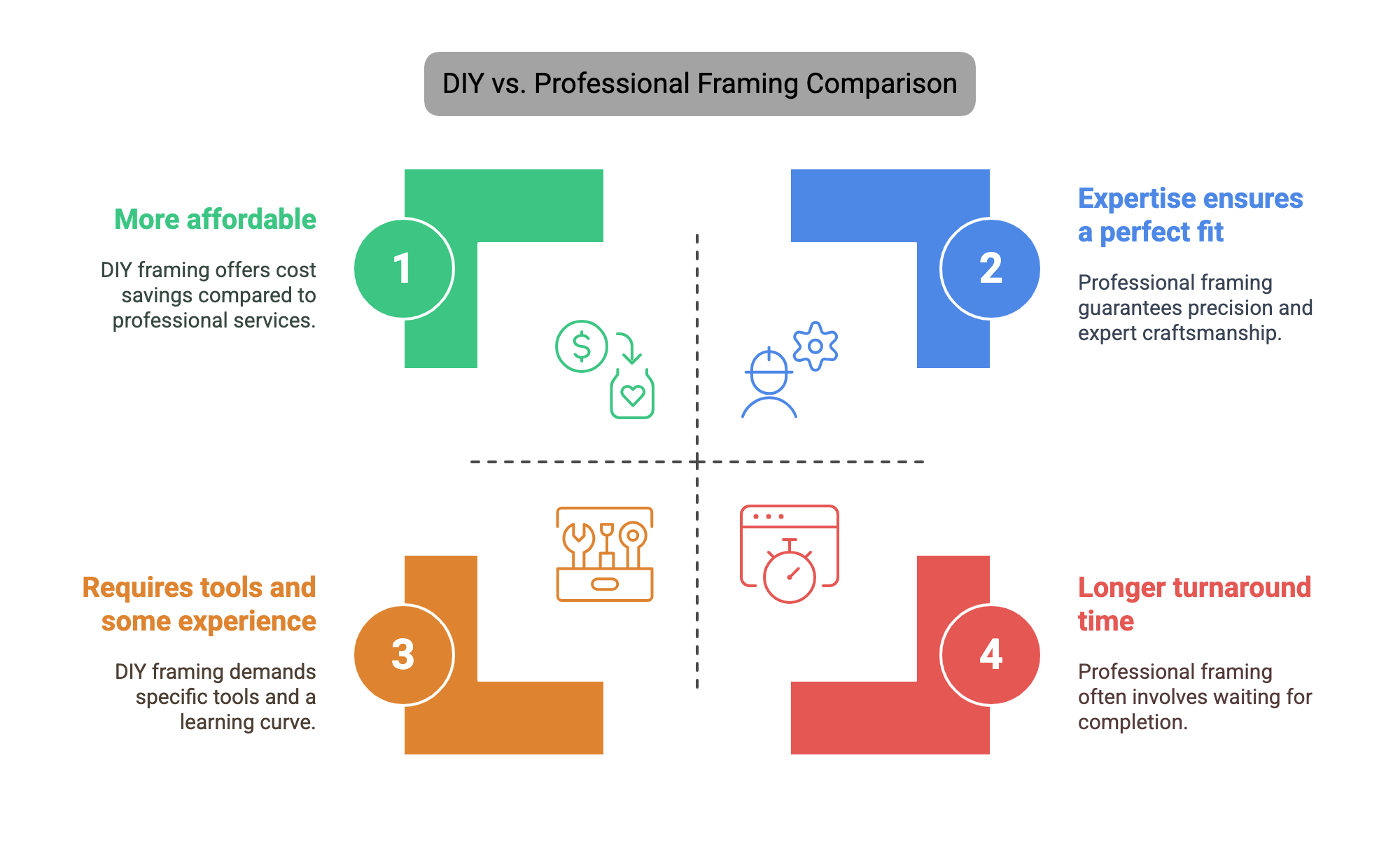
If your canvas is highly valuable or an unusual size, professional framing may be the best choice. Otherwise, a DIY approach can be a cost-effective and rewarding project.
Need help choosing the perfect frame? Contact us or visit one of our stores in Brisbane, Sydney, the Central Coast, Newcastle and the Southern Highlands today!

